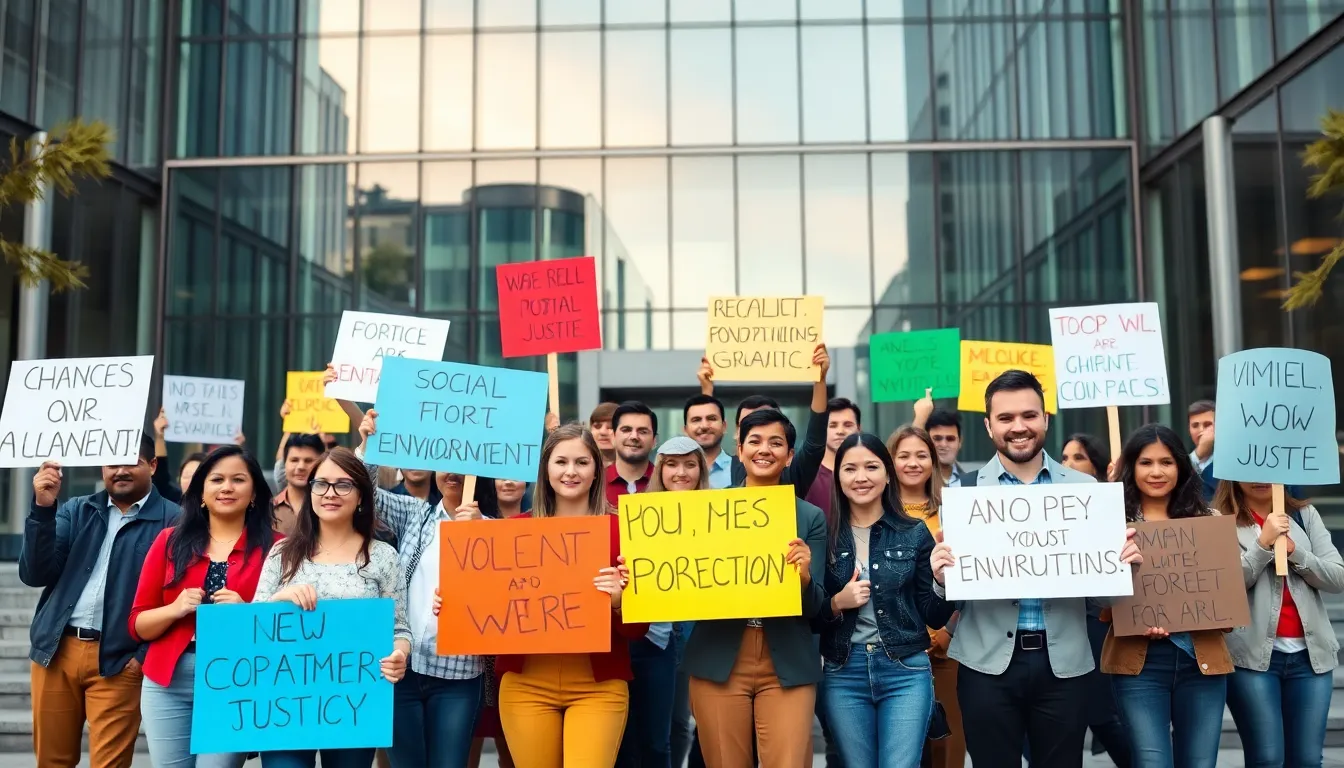Ever wondered why a seemingly innocent hashtag can ignite a global movement? Political causes are at the heart of many societal shifts, but what exactly fuels these flames of change? In this piece, we investigate into the fascinating interplay of history, economics, social dynamics, and environmental issues that shape political causes today. Buckle up, because understanding these forces can make your head spin, or at least provide some serious dinner party fodder.
Table of Contents
ToggleUnderstanding Political Causes

Political causes stem from a vast array of factors that propel individuals or groups to advocate for change. In simple terms, these are the motivations that lead people to engage in political action, whether through protests, voting, or grassroots organizing. Understanding political causes involves examining the underlying issues, societal perceptions, and the cultural canvas on which these movements are painted.
Political causes often emerge when populations feel their interests are not represented. They can range from demands for social justice to calls for environmental protection. Each political movement has its own unique identity, but they all share a common denominator: the desire for improvement. When people rally around a specific cause, it’s usually a response to perceived injustices or urgent issues that demand immediate attention. Recognizing these underlying motivations is crucial for anyone looking to grasp the complexities of political engagement.
Historical Context of Political Movements
The history of political movements serves as a rich tapestry woven with the threads of activism, oppression, and resilience. To fully appreciate contemporary political causes, one must explore their historical antecedents. A perfect example is the civil rights movement in the United States, which was not just about legal equality but also about challenging deep-rooted social norms and hate.
In the wake of World War II, political movements expanded in various forms across the globe. Decolonization in Africa and Asia brought forth a wave of nationalism, as newly independent nations sought to define their identities apart from colonial rule. Meanwhile, the suffragette movements in Europe and North America were groundbreaking in their quest for women’s rights. These historical lessons lay the groundwork for understanding today’s political causes, as they reveal the cyclical nature of activism and response.
Social Influences on Political Causes
Social influences act as catalysts for political causes, shaping public perception and mobilizing the masses. From the importance of family discussions to social media posts, myriad channels help the dissemination of ideas. It’s not just what people believe, but who they believe in that can spark movements.
For instance, the rise of youth-led activism, exemplified by movements like #FridaysForFuture, showcases how younger generations challenge societal norms. Their reliance on social media to organize protests demonstrates a seismic shift in political engagement. Today’s activists often bypass traditional media, creating their narratives and rallying supporters with just a few clicks. This social interconnectedness not only spreads awareness but also builds solidarity across borders, reinforcing the idea that collective action is a powerful instigator for change.
Economic Factors Driving Political Causes
Economic factors play a significant role in shaping political causes. Economic inequality often serves as a breeding ground for discontent. When large segments of the population find themselves economically marginalized, they are more likely to seek change. The Occupy Wall Street movement is a powerful reminder of how perceived economic disparities can galvanize a nationwide protest.
Shifts in employment patterns, trade dynamics, and government policies also influence political sentiments. For instance, the rise of automation has raised concerns about job security, leading many to question the economic models that drive society. Economic crises and recession periods often prompt citizens to respond collectively, demanding accountability and reform from policymakers.
Environmental and Global Dimensions
The global challenges posed by climate change cannot be overlooked when discussing political causes. As natural disasters become increasingly frequent and severe, the environmental crisis elevates public consciousness about climate justice as a political cause. Movements advocating for action against global warming, such as the climate strikes initiated by Greta Thunberg, illustrate how urgent these issues are perceived in today’s society.
Also, as environmental issues cross borders, they emphasize the need for international cooperation. The interconnectedness of ecological systems means that a fire in the Amazon can fuel protests in Europe. Global awareness campaigns highlight the urgency of acting not just locally but internationally. This perspective showcases how political causes related to environmentalism can indeed transcend national boundaries.
The Role of Activism in Political Causes
Activism is often perceived as the heartbeat of political causes. Without it, many movements might flicker out before they can ignite meaningful change. Activists use various strategies, from grassroots organizing to digital campaigns, to raise awareness and mobilize others.
A notable example is the LGBTQ+ rights movement, which has evolved significantly over the past few decades. From the Stonewall Riots to the ongoing push for equality in marriage and beyond, activists have harnessed both public demonstrations and legal challenges to advance their cause. This evolution showcases that activism isn’t just a reaction: it’s a proactive strategy toward reshaping policy and public sentiment.





